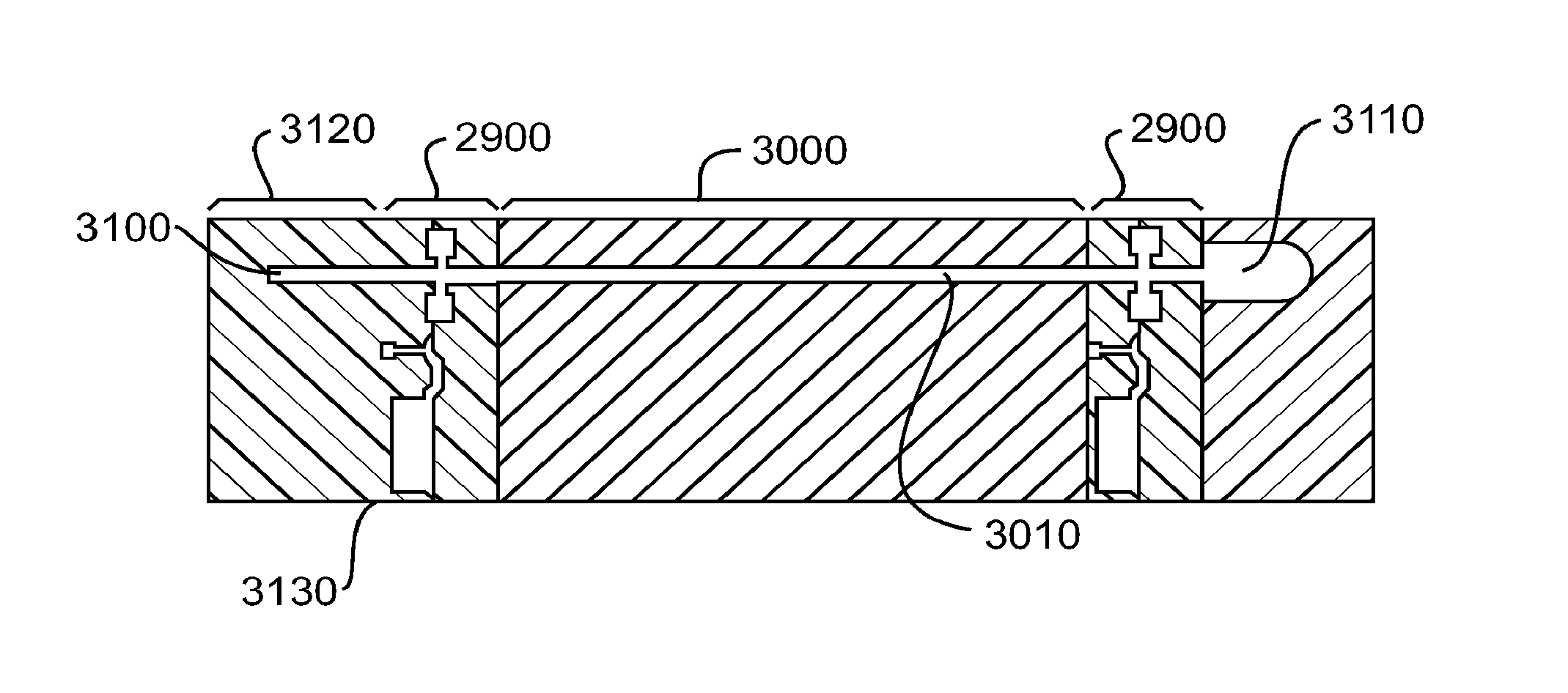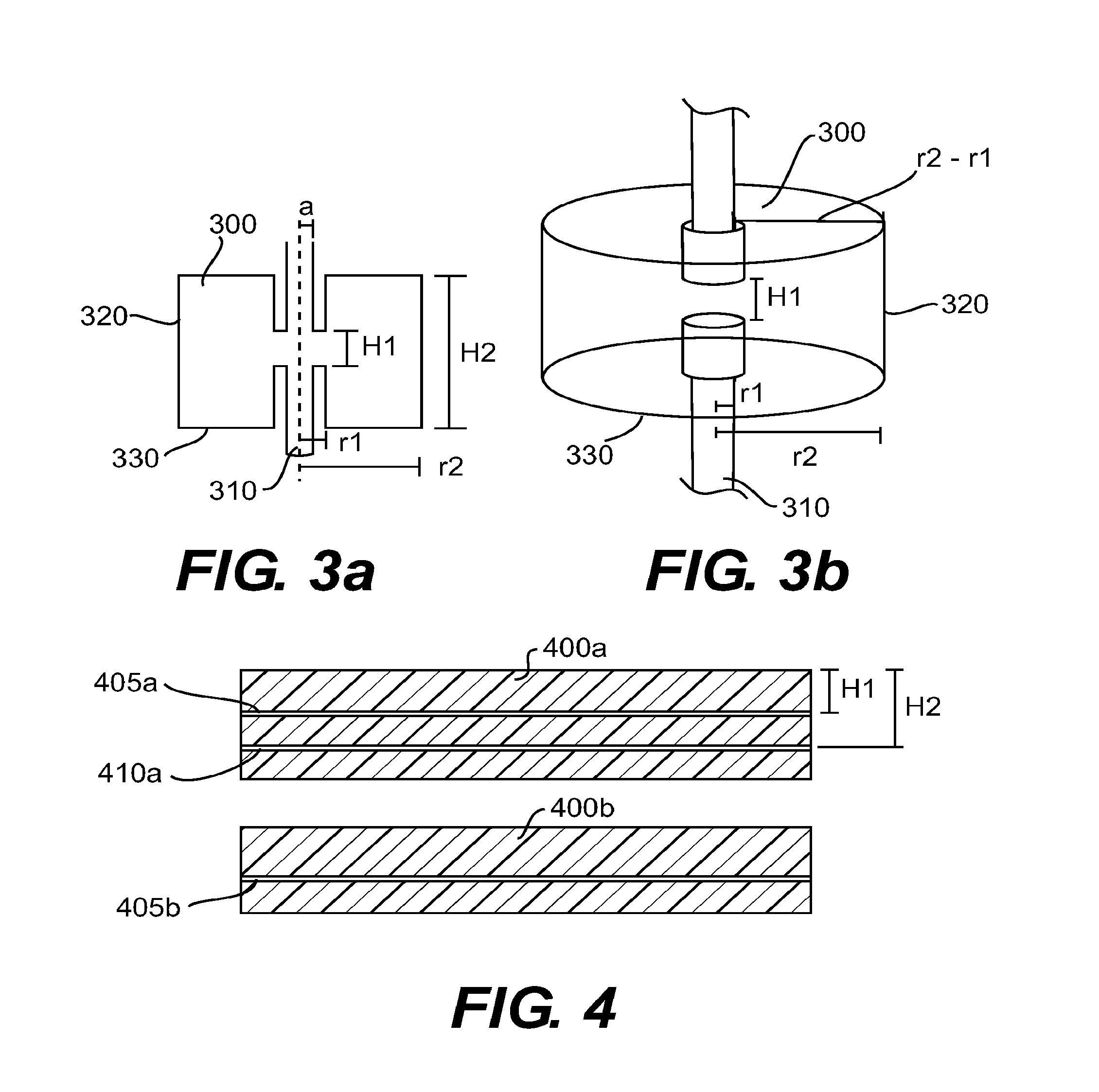Multi-cavity vacuum electron beam device for operating at terahertz frequencies
a vacuum electron beam and terahertz frequency technology, applied in the direction of discharge tube/lamp details, amplifiers with transit-time effect, discharge tube luminescnet screens, etc., can solve the problems of high-order multipliers that are inefficient, require millions of dollars of investment, and are very expensiv
- Summary
- Abstract
- Description
- Claims
- Application Information
AI Technical Summary
Benefits of technology
Problems solved by technology
Method used
Image
Examples
examples
[0085]In accordance with certain embodiments of the invention, exemplary devices were prepared and evaluated.
example a
See FIGS. 36a-36e
[0086]A THz emitter array Klystron was fabricated, as generally illustrated in FIGS. 36a-36f. As shown on FIG. 36a, each resonant cavity was fabricated to have the following dimensions.
[0087]
Dimension ValueH1100 umH2430 umr135 umr2400 uma35 um
[0088]The fabrication methods utilized DRIE etching and wafer-level (or die-level) fusion bonding of silicon wafers to form a negative mold that was coated with sputtered or electrodeposited copper. As shown on FIG. 36b, in one embodiment, an 8 kV gun voltage ‘stock’ FEA 100 with a current density of 40 A / cm2 was fusion-bonded to the base of the tube stack 110 (with a dielectric spacer 3600 between the tube stack 110 and the electron gun 100 having a 1 MV / m field gradient), with the electron beam 105 diameter confined by a 1T magnetic field generated by two permanent magnets 3610 and aligned with the axis of the tube 110. The fabrication process provided excellent alignment of the magnetic field with the tube axis, and allowed...
example b
[0092]A 2-cavity klystron was prepared according to fabrication methods of the invention. The beam tunnel diameter for both current, and cavity coupling was optimized while making some reasonable assumptions about current density and filling factor results in a beam tunnel radius of 35 μm, and a beam radius of 25 μm. To obtain such a fine beam with a conventional thermionic cathode would require beam shaving, which would significantly lower the tube efficiency. The alternate approach is to use a FEA, which can produce the necessary current density without beam compression. This also allows for easy integration with a micro-fabricated tube, and simplifies the magnetic field design.
[0093]FEAs are capable of producing very high current densities, often exceeding several hundred A / cm2 in ideal conditions. A vacuum tube environment provides less than ideal conditions for an FEA, however it does seem reasonable to expect current densities up to 40 A / cm2. Additionally, FEA performance impr...
PUM
 Login to View More
Login to View More Abstract
Description
Claims
Application Information
 Login to View More
Login to View More - R&D
- Intellectual Property
- Life Sciences
- Materials
- Tech Scout
- Unparalleled Data Quality
- Higher Quality Content
- 60% Fewer Hallucinations
Browse by: Latest US Patents, China's latest patents, Technical Efficacy Thesaurus, Application Domain, Technology Topic, Popular Technical Reports.
© 2025 PatSnap. All rights reserved.Legal|Privacy policy|Modern Slavery Act Transparency Statement|Sitemap|About US| Contact US: help@patsnap.com



